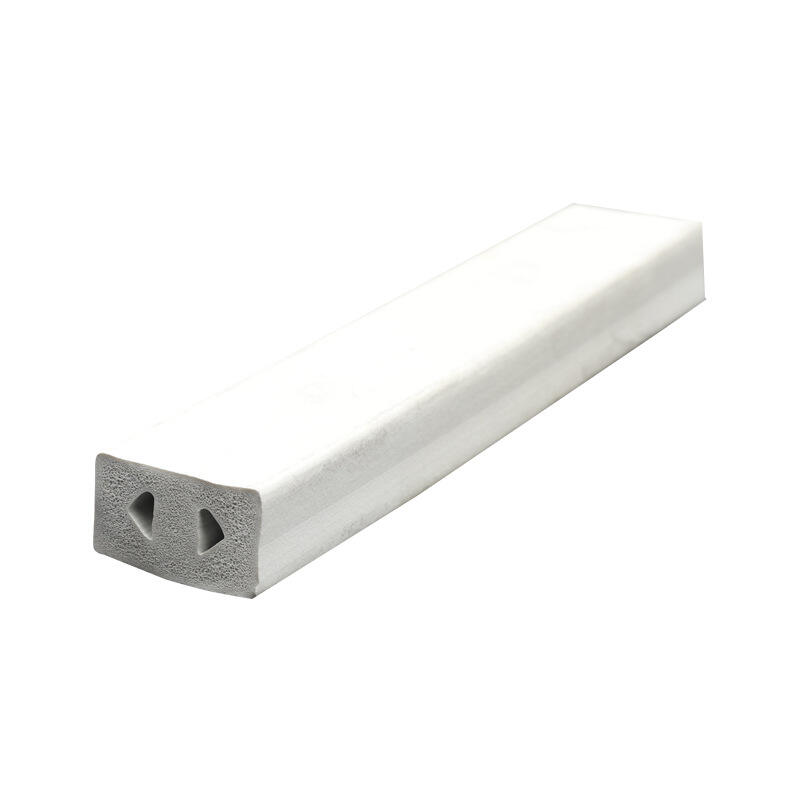Pochopenie kľúčovej úlohy stavebných tesniacich riešení
Stavebný priemysel sa naďalej vyvíja s inovatívnymi riešeniami, ktoré zvyšujú výkon a životnosť budov. Medzi tieto pokroky patrí tesniace pásky ktoré sa stali nevyhnutnou súčasťou moderných stavebných postupov. Tieto univerzálne materiály tvoria kľúčovú bariéru proti vonkajším vplyvom a zároveň ponúkajú množstvo výhod, ktoré prispievajú k efektivite a trvanlivosti stavieb.
Ak sú tesniace pásky správne implementované, vytvárajú účinnú bariéru, ktorá bráni prieniku vzduchu, vody a zvuku. Používajú sa v rôznych konštrukčných prvkoch, od okien a dverí až po betónové styky a strešné konštrukcie. Pochopeie ich významu pomáha odborníkom na stavbách urobiť informované rozhodnutia o ochrane stavebného plášťa.
Nediskutabilné Aplikácie v modernej štruktúre
Integrácia okien a dverí
Jedným z hlavných použití tesniacich pásov je pri inštalácii okien a dverí. Tieto komponenty vytvárajú vzduchotesný uzáver medzi rámom a okolitou konštrukciou, ktorý účinne zabraňuje ťahu a prieniku vlhkosti. Odborní inštalatéri pravidelne využívajú tesniace pásy na zabezpečenie správnej inštalácie a maximalizovanie energetickej účinnosti v rodinných aj komerčných budovách.
Integračný proces vyžaduje presné meranie a starostlivú inštaláciu na dosiahnutie optimálneho výkonu. Moderné tesniace pásky sú dostupné vo viacerých profiloch a materiáloch, pričom každý typ je navrhnutý tak, aby vyhovoval rôznym typom rámov a inštalačným požiadavkám. Táto všestrannosť z nich robí nevyhnutný prvok pri dosahovaní správneho tesnenia obvodového plášťa budovy.
Ochrana betónových spárov
V betónových konštrukciách pásky zohrávajú dôležitú úlohu pri ochrane dilatačných spárov a kontrole pohybu vlhkosti. Tieto špeciálne pásky bránia prieniku vody, zároveň však umožňujú nevyhnutné konštrukčné posuny, čím zachovávajú integritu betónových konštrukcií. Ich použitie je obzvlášť dôležité v základoch, parkovacích objektoch a priemyselných podlahách.
Trvanlivosť betónových spárov sa výrazne zlepší, ak sú nainštalované vhodné tesniace pásky. Této komponenty odolávajú chemickému pôsobeniu, UV žiareniu a opakovaným cyklom stlačenia, čo zabezpečuje dlhodobý výkon v náročných podmienkach. Stavebné tímy musia starostlivo vybrať vhodný typ tesnenia na základe konkrétnych požiadaviek projektu a environmentálnych podmienok.
Environmentálne a energetické výhody
Vylepšenie regulácie teploty
Tesniace pásky výrazne prispievajú k energetickej efektívnosti budov tým, že minimalizujú tepelný prenos cez medzery a spáry. Táto vylepšená izolačná schopnosť pomáha udržiavať rovnomernú teplotu vo vnútri budov, pričom znižuje zaťaženie vykurovacích a chladiacich systémov. Budovy vybavené vhodnými tesniacimi riešeniami často vykazujú merateľné zníženie spotreby energie.
Tepelné výhody siahajú ďalej než len za pohodlie, čo sa prejaví výraznou úsporou nákladov v priebehu času. Odborná inštalácia tesniacich pásov pomáha vytvoriť efektívne tepelné obálky, čo je obzvlášť dôležité v oblastiach s extrémnymi teplotnými výkyvmi. Táto zvýšená kontrola nad klimatickými podmienkami v interiéri podporuje ciele udržateľnosti aj prevádzkovú efektívnosť.
Riešenia na riadenie vlhkosti
Efektívna kontrola vlhkosti je v stavebníctve kritickou otázkou a tesniace pásy ponúkajú spoľahlivú ochranu pred prienikom vody. Této komponenty vytvárajú vodotesné bariéry, ktoré zabraňujú problémom súvisiacim s vlhkosťou, ako napríklad rast plesní, degradácia materiálu a poškodenie konštrukcie. Ich použitie je obzvlášť cenné v oblastiach, kde je bežný silný dážď alebo vysoká vlhkosť.
Profesionálni stavitelia vedia, že správne riadenie vlhkosti začína vhodnými tesniacimi riešeniami. Strategické umiestnenie tesniacich pásov okolo potenciálnych vstupných bodov pomáha zachovať celistvosť budovy a zároveň chráni interiérové priestory pred poškodením vodou. Tento preventívny prístup výrazne znižuje nároky na dlhodobú údržbu a predlžuje životnosť budovy.
Najlepšie postupy a úvahy pri inštalácii
Smernice pre výber materiálu
Výber správnych tesniacich pásov zahŕňa dôkladné zváženie rôznych faktorov, vrátane klimatických podmienok, požiadaviek na použitie a predpokladanej trvácnosti. Odborníci na staviteľstvo musia pri výbere vhodných riešení posudzovať vlastnosti materiálov, ako sú pružnosť, schopnosť obnovy po stlačení a odolnosť voči chemikáliám. Táto pozornosť detailom zabezpečuje optimálny výkon počas celej životnosti budovy.
Rôzne materiály ponúkajú v konkrétnych aplikáciách rôzne výhody. Napríklad tesniace pásky na báze EPDM poskytujú vynikajúcu odolnosť proti poveternostným podmienkam a trvanlivosť, zatiaľ čo varianty z PVC ponúkajú vynikajúcu chemickú odolnosť. Porozumenie týmto vlastnostiam pomáha odborníkom robiť informované rozhodnutia, ktoré sú v súlade s požiadavkami projektu a požiadavkami na kvalitu.
Profesionálne montážné techniky
Účinnosť tesniacich pásov v veľkej miere závisí od správnych techník inštalácie. Odborní inštalatéri musia dodržať pokyny výrobcu a zároveň zohľadniť konkrétne podmienky a požiadavky na mieste inštalácie. To zahŕňa správnu prípravu povrchu, presné merania a vhodné metódy aplikácie, aby sa zabezpečilo optimálne fungovanie.
Kontrola kvality počas inštalácie je kľúčová pre dlhodobý úspech. Stavebné tímy by mali zaviesť pravidelné kontrolné postupy, aby overili správne umiestnenie a priľnavosť. Táto pozornosť voči detailom počas inštalácie pomáha predchádzať bežným problémom, ako sú medzery, nesprávne zarovnanie alebo nedostatočné stlačenie, ktoré môžu ohroziť výkon systému.
Často kladené otázky
Ako dlho zvyčajne tesniace pásky vydržia?
Životnosť tesniacich pásov sa líši v závislosti od kvality materiálu, podmienok inštalácie a pôsobenia vonkajšieho prostredia. Kvalitné pásky správne nainštalované môžu vydržať 15–20 rokov alebo viac. Pravidelná kontrola a údržba môžu predĺžiť ich funkčnú životnosť a zároveň zabezpečiť nepretržitý výkon.
Je možné vymeniť tesniace pásky bez rozsiahleho stavebného zásahu?
Väčšina tesniacich pásov je navrhnutá tak, aby ich výmena prebiehala relatívne jednoducho. Hoci v niektorých prípadoch môže byť potrebné niektoré súčiastky demontovať, odborní inštalatéri zvyčajne môžu nahradiť poškodené alebo opotrebované pásy bez rozsiahleho stavebného zásahu. Kľúčové je identifikovať problémy včas a rýchlo na ne reagovať.
Čím sa tesniace pásy líšia od tradičných metód tesnenia?
Na rozdiel od tradičného tesnenia tesniace pásy zabezpečujú stále výkon prostredníctvom špeciálne navrhnutých profilov a materiálov. Poskytujú lepšiu odolnosť, udržiavajú pružnosť v priebehu času a dokážu efektívnejšie kompenzovať pohyby konštrukcie. Okrem toho tesniace pásy zvyčajne vyžadujú menej údržby a poskytujú spoľahlivejšiu dlhodobú ochranu proti vonkajším vplyvom.

